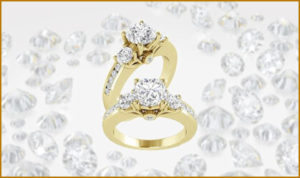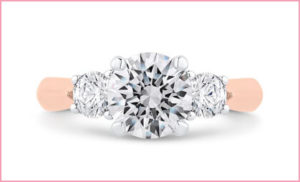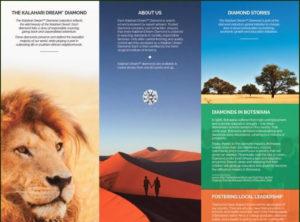Diamonds & The Zeitgeist
Millennials vs Gen Z
Millennials, people currently aged 21 to 39, represent 29% of the world’s population and are the largest group of diamond consumers today. They accounted for nearly 60% of diamond jewelry demand in the U.S. in 2017, according to data published by the De Beers Group.
 On their heels, Gen Z, aged up to 20, is an even larger consumer generation representing 35% of the world’s population. Despite the generation being a long way from financial maturity, Gen Z is already making its presence felt in the diamond market, with the oldest Gen Z consumers (currently aged 18 to 20) acquiring 5% of all diamond jewelry pieces in the U.S. in 2017.
On their heels, Gen Z, aged up to 20, is an even larger consumer generation representing 35% of the world’s population. Despite the generation being a long way from financial maturity, Gen Z is already making its presence felt in the diamond market, with the oldest Gen Z consumers (currently aged 18 to 20) acquiring 5% of all diamond jewelry pieces in the U.S. in 2017.
De Beers’ data highlights key similarities and differences between Millennials and Gen Z as a result of their life experiences that have implications for diamond brands and retailers. Millennials are in general more mistrusting, requiring brands to earn their trust before they can pursue growth. While Gen Z tends to be more individualistic and optimistic, desiring products that help build their own personal brand. Key similarities are with regards to valuing love, being digital natives, being engaged with social issues, and desiring authenticity and self-expression.
Expressing Love & Commitment
Romantic love remains the key driver globally for diamond jewelry sales, reports De Beers, with both Millennials and Gen Z holding strong aspirations to be in committed relationships. But their attitudes towards how they express and symbolize their love are evolving. Although many still want to follow tradition, there is an increasing focus on personalized products and relaxed experiences that reflect their individual values and preferences.
The bridal market continues to be of central importance, representing around 27% of diamond jewelry demand in  the major diamond consuming countries. But diamonds given simply as a gift of love or romance (unrelated to marriage) represents a further 12% of total demand from younger consumers in 2017.
the major diamond consuming countries. But diamonds given simply as a gift of love or romance (unrelated to marriage) represents a further 12% of total demand from younger consumers in 2017.
This reality fuels the need for retailers to complement traditional designs with more niche, customizable offerings to reflect the broader interpretation of love and commitment from young consumers, cites Neil Shah of Shah Luxury, New York. In fact, the online wedding hub, The Knot, found in a 2017 study that 45% of engagement rings are custom design.
Communicating Digitally
As digital communication natives, Millennials and Gen Z have an always-on attitude and seek instant gratification, finds De Beers. Online shopping and social media are as significant to these generations as physical retail outlets when it comes to researching purchases. Gen Z is more likely than older Millennials to get inspiration from social media platforms.
 As Millennials and Gen Z experience this seamless digital coexistence in their everyday lives, they expect an equally seamless omni-channel experience when buying products. Omni-channel strategies that are organic, authentic, humorous, and use out-of-the-box thinking resonate most with these consumers. Gen Z’s most popular social media platforms are Instagram and Snapchat, while Facebook, Twitter and Pinterest are considered older generations’ media.
As Millennials and Gen Z experience this seamless digital coexistence in their everyday lives, they expect an equally seamless omni-channel experience when buying products. Omni-channel strategies that are organic, authentic, humorous, and use out-of-the-box thinking resonate most with these consumers. Gen Z’s most popular social media platforms are Instagram and Snapchat, while Facebook, Twitter and Pinterest are considered older generations’ media.
“The challenge is generating traffic and offering options critical to Millennials,” says Jay Gerber for the diamond jewelry manufacturer, W.R. Cobb Company, East Providence, Rhode Island, noting that you can get diamond studs anywhere. “You have to give reasons to consumers as to why they should buy from you. What kind of experience do you provide? What consumers want is ease of purchase, service and education. What retailers offer is critical.”
With digital analytics tools, jewelers can learn a lot about their jewelry customers, from how they browse their website and interact with the brand on social media to what influencers they follow and products they buy. If you realize your best customers take a certain path to doing business with you then your marketing becomes geared to getting others to travel a similar path.
Social Conscience
Millennials and Gen Z both display strong concern for social causes and responsibly sourced products, De Beers reports. This highlights the opportunity for diamond brands and retailers to be more proactive in communicating the good that diamonds do throughout the world, and the contribution their individual brands make to important social causes.
The data reveals that Gen Z finds corporate storytelling insufficient to meet their expectations and expect brands to be able to back up their ethical claims, moving from tell me to show me when it comes to sourcing, which De Beers says makes technologies like block chain that provide digital asset tracking important.
be able to back up their ethical claims, moving from tell me to show me when it comes to sourcing, which De Beers says makes technologies like block chain that provide digital asset tracking important.
Rebecca Foerster, executive vice president of strategic planning and marketing, Leo Schachter Diamonds, New York City encourages jewelers to tap into existing resources to tell the story of how diamonds do good in the world, including the Responsible Jewellery Council, Diamond Empowerment Fund, and Diamond Producers Association.
“Unearth a diamond, uplift a community” is the tagline for LSD’s Kalahari Dream collection, with sales helping to benefit community initiatives in Botswana, Namibia and South Africa where the stones derive. Diamond production helps to fund hospitals, schools, clean drinking water, and more, says Foerster. In fact, Leo Schachter’s cutting factory in Botswana empowers local women, who dominate its workforce. Social media has been an important channel for sharing humanitarian and environmental stories.










